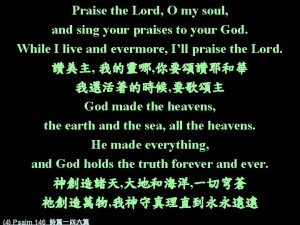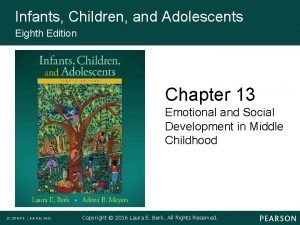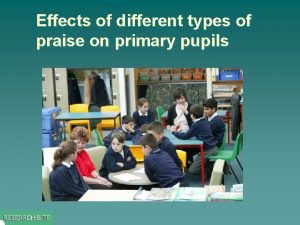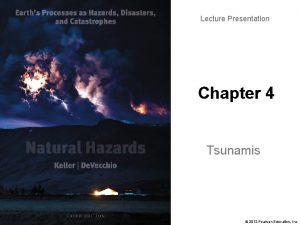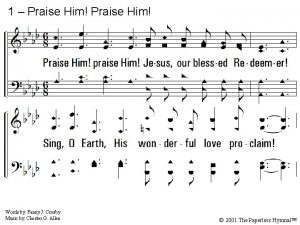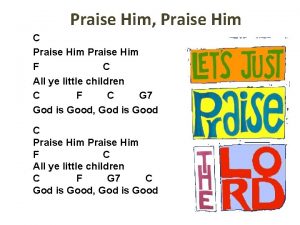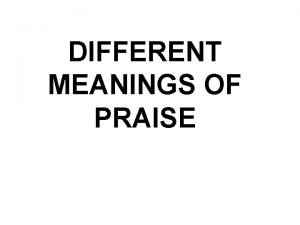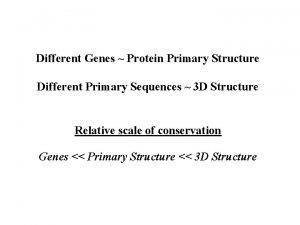Effects of different types of praise on primary












- Slides: 12

Effects of different types of praise on primary pupils

Key issue addressed by the study u The study explored: – The effects of different types of praise on pupils’ motivation – How these effects are influenced by gender and age

Four kinds of teacher feedback u u Product Praise focuses on what pupils achieve e. g. “ what a wonderful painting” Process Praise focuses on how pupils complete a task e. g. “what a careful job you did” Person Praise focuses on pupils’ skills e. g. “you are a good writer” Neutral feedback e. g. a positive sounding “OK”

The effects of praise on pupils aged four and five u 4 -5 year olds showed increased motivation after receiving any of the three types of praise (as opposed to neutral feedback)

The effects of praise on girls aged 9 to 11 years u u u Increased motivation after receiving product praise Increased motivation after receiving process page Decreased motivation after receiving person praise

The effects of praise on boys aged 9 to 11 years u The researchers found the type of feedback received, praise or neutral feedback, did not affect boys’ motivation

Who were the children in the study? In total 169 pupils from San Francisco schools u 76 nursery pupils aged 4&5 u 93 primary pupils aged 9 -11 u

How was the information gathered? u u The researchers interviewed pupils who had received different kinds of praise and observed their behaviour when tackling problems. Each pupil tackled two sets of puzzles: one moderately easy, the second extremely difficult or impossible to solve After each puzzle pupils received one of 3 types of positive praise, neutral feedback or no feedback at all Through interviews and observation researchers assessed pupils’ problem-solving motivation

How can teachers use this evidence? The researchers discovered four categories of praise in the study u What kind of feedback do you give to and to which pupils? u You might record a section of your lesson to find out, and use the study findings to assess how appropriate it is for the gender and age group of your pupils. u

How can school leaders use this evidence? The researchers explored a particular approach to teaching by setting up puzzle tasks to create contrasting learning scenarios for children u When you are exploring solutions to a particular issue in your school you might consider creating a similar test bed to compare different approaches u

Follow-up reading u u Study reference: Corpus, J. H. , Lepper, M. R. (2007) The Effects of Person Versus Performance Praise on Children’s Motivation: Gender and age as moderating factors in Educational psychology, Vol. 27, No. 4, August 2007, pp. 487 -508 You might like to read a longer summary pupil motivation on the GTC website: http: //www. gtce. org. uk/research/romtopics/rom_teaching andlearning/persistence_oct 07/

Feedback Did you find this useful? u What did you like? u What didn’t you like? Any feedback on this Research Bite would be much appreciated. Please email your feedback to: research. summaries@dcsf. gsi. gov. uk u
 Stream of praise praise the lord, o my soul
Stream of praise praise the lord, o my soul Person praise vs process praise
Person praise vs process praise Praise him praise him jesus our blessed redeemer
Praise him praise him jesus our blessed redeemer Praise the lord praise the lord let the people rejoice
Praise the lord praise the lord let the people rejoice Praise him praise him jesus our blessed redeemer lyrics
Praise him praise him jesus our blessed redeemer lyrics Your holy
Your holy Types of praise
Types of praise Primary and secondary effects of a tectonic hazard
Primary and secondary effects of a tectonic hazard Primary and secondary effects of a tectonic hazard
Primary and secondary effects of a tectonic hazard Pearson education
Pearson education Thermosoftening plastics examples
Thermosoftening plastics examples Flame test principle
Flame test principle Sound will travel at different speeds in different mediums.
Sound will travel at different speeds in different mediums.
